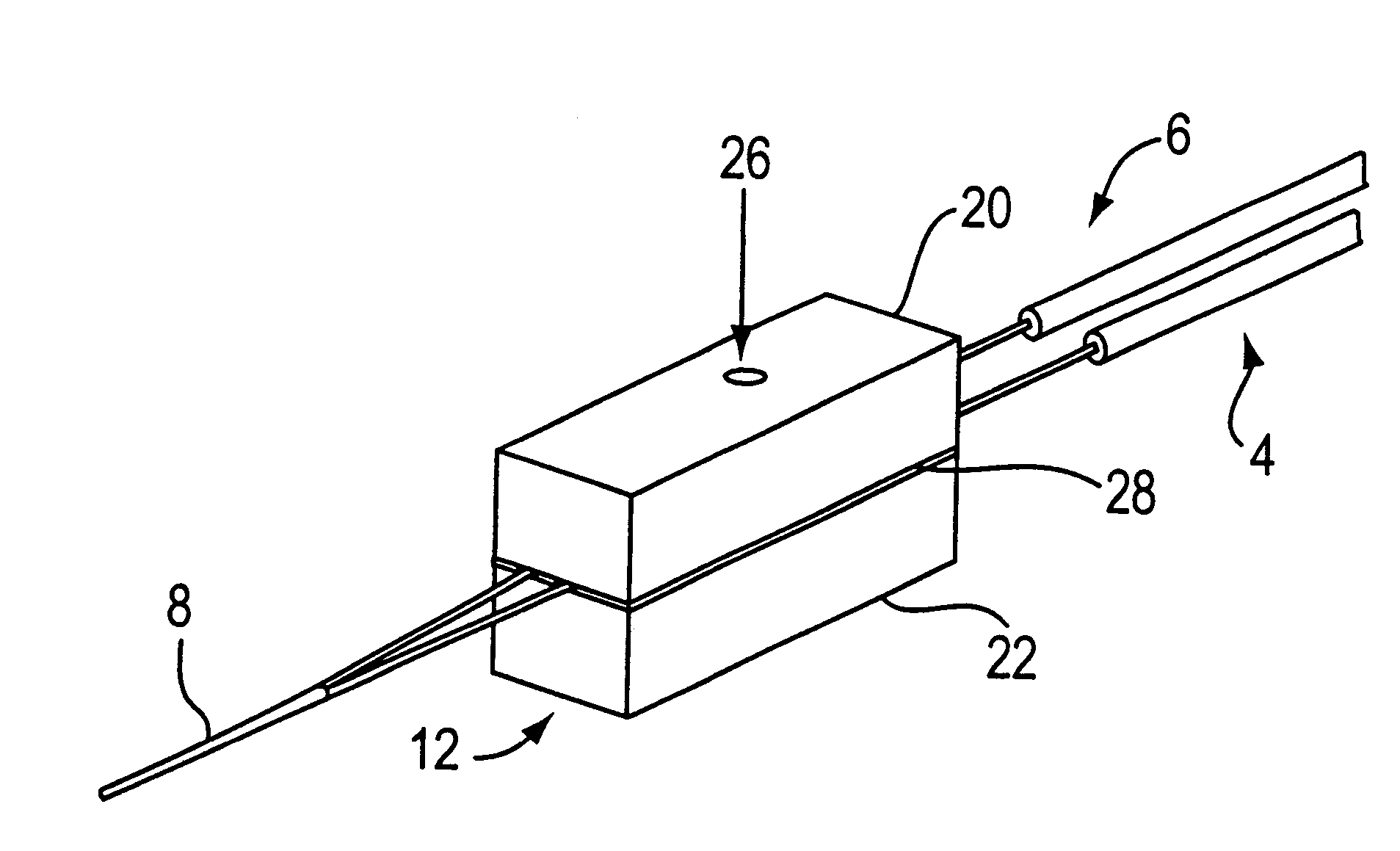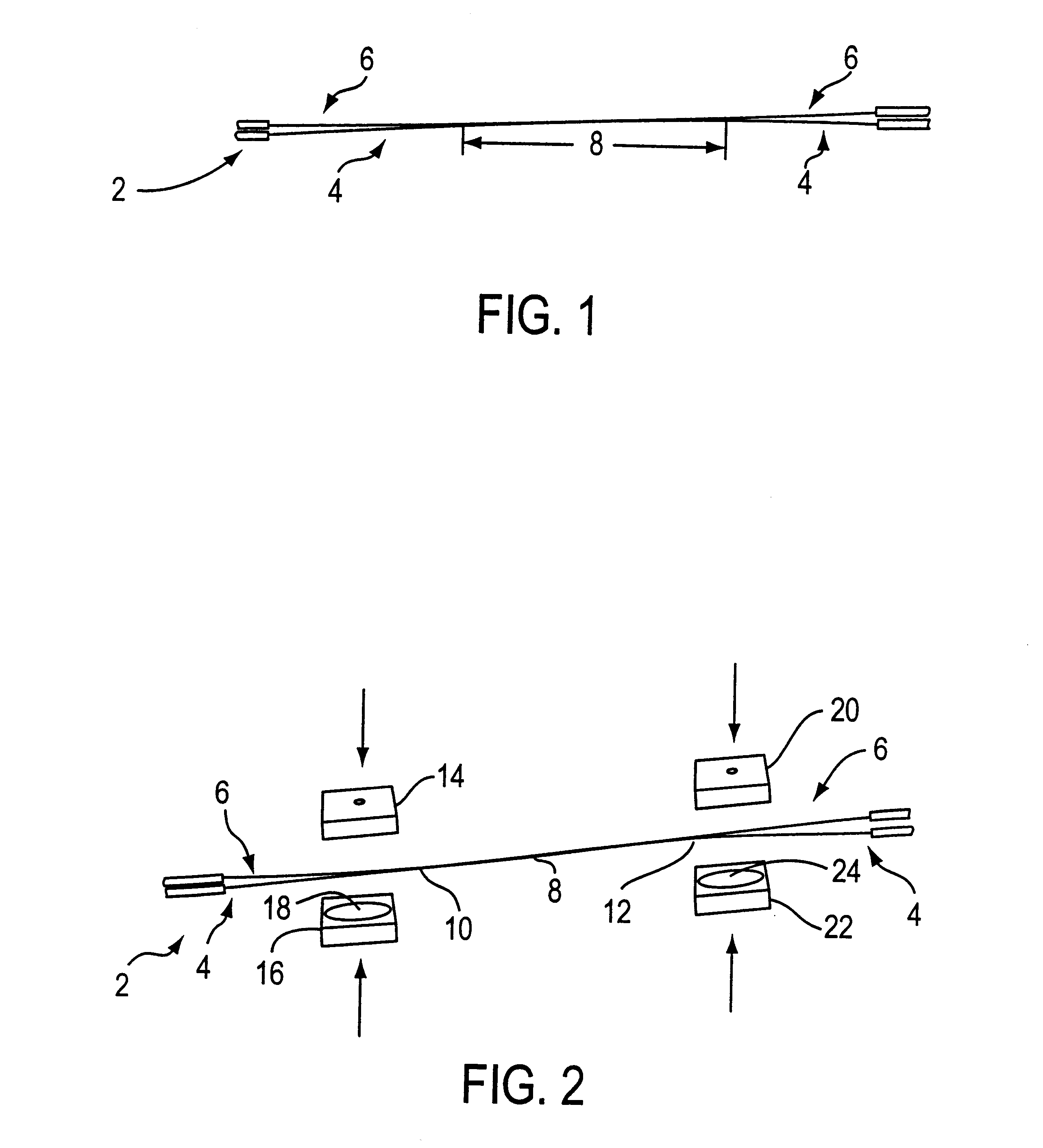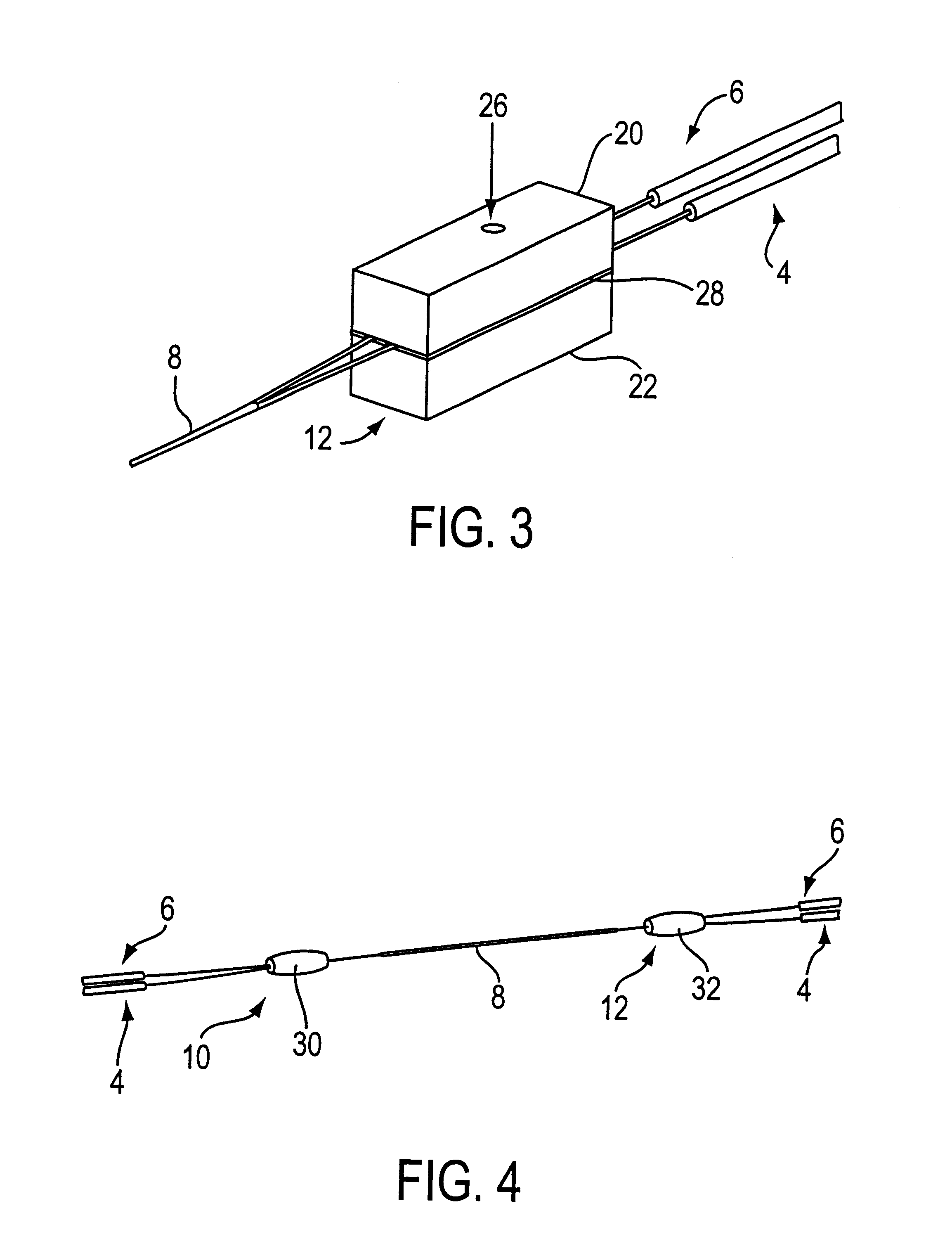Apparatus and method bonding optical fiber and/or device to external element using compliant material interface
a technology of material interface and apparatus, applied in the direction of optics, instruments, optical light guides, etc., can solve the problems of difficult automation of processes, poor yield of process, and insufficient protection of bonded optical fibers or devices according to these prior techniques
- Summary
- Abstract
- Description
- Claims
- Application Information
AI Technical Summary
Benefits of technology
Problems solved by technology
Method used
Image
Examples
first embodiment
FIGS. 1-19 are illustrations of the process of the present invention according to the invention. FIG. 1 shows a fused-biconical tapered coupler 2 of two optical fibers 4, 6 that have been stripped of their coating in the fused region area 8. To properly package this device 2, the fused tapered region 8 must be secured, supported, and protected without any direct contact with the packaging.
FIG. 2 is the first step in this packaging procedure to create anchoring points at anchoring locations 10, 12 that will be used to secure the coupler 2 to the packaging. To allow a standard package size to be used, the anchor locations 10, 12 will generally be offset from the center of the device (e.g., fused region 8) by a standard distance. The offset distance is generally sufficient to place the anchoring locations 10, 12 close to, yet safely outside, the fused region 8. To create the anchor locations 10, 12, forms shown as blocks above (e.g., blocks 14, 20) and below (e.g., blocks 16, 22) the o...
second embodiment
FIG. 3 is a form 20, 22 shown in place around the optical fibers 4, 6 at an anchoring location 12 outside the fused region 8. To create the anchoring point 12, pure liquid aluminum is injected into the form 20, 22 at aperture 26, and allowed to cool. As the aluminum cools, it safely chemically bonds to and compresses around the optical fibers 4, 6, although other materials may be used that do not chemically bond per se. That is, other materials may also be used to bond or secure to or compress around the optical fibers to form the anchoring points. In addition, the bonding material need not necessarily be poured, as explained in greater detail below in connection with the invention.
Further, forms / blocks may also not be necessary depending on the type of anchor point being produced. For example, when a liquid material is used for bonding, the liquid material may simply be poured on the optical fiber, device and / or fiber optic device. Alternatively, metal blocks can be used as well an...
PUM
 Login to View More
Login to View More Abstract
Description
Claims
Application Information
 Login to View More
Login to View More - R&D
- Intellectual Property
- Life Sciences
- Materials
- Tech Scout
- Unparalleled Data Quality
- Higher Quality Content
- 60% Fewer Hallucinations
Browse by: Latest US Patents, China's latest patents, Technical Efficacy Thesaurus, Application Domain, Technology Topic, Popular Technical Reports.
© 2025 PatSnap. All rights reserved.Legal|Privacy policy|Modern Slavery Act Transparency Statement|Sitemap|About US| Contact US: help@patsnap.com



